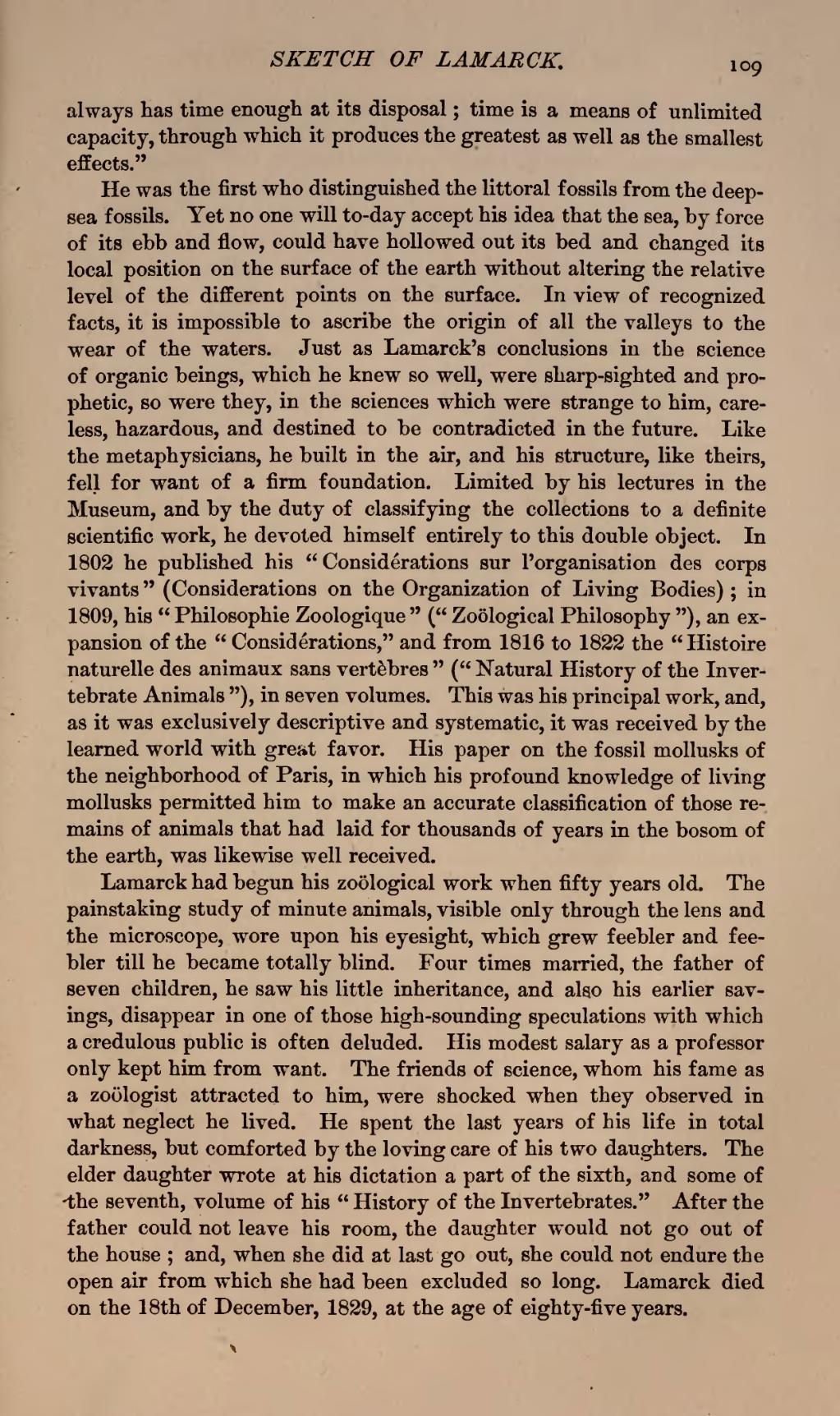always has time enough at its disposal; time is a means of unlimited capacity, through which it produces the greatest as well as the smallest effects."
He was the first who distinguished the littoral fossils from the deep-sea fossils. Yet no one will to-day accept his idea that the sea, by force of its ebb and flow, could have hollowed out its bed and changed its local position on the surface of the earth without altering the relative level of the different points on the surface. In view of recognized facts, it is impossible to ascribe the origin of all the valleys to the wear of the waters. Just as Lamarck's conclusions in the science of organic beings, which he knew so well, were sharp-sighted and prophetic, so were they, in the sciences which were strange to him, careless, hazardous, and destined to be contradicted in the future. Like the metaphysicians, he built in the air, and his structure, like theirs, fell for want of a firm foundation. Limited by his lectures in the Museum, and by the duty of classifying the collections to a definite scientific work, he devoted himself entirely to this double object. In 1802 he published his "Considérations sur l'organisation des corps vivants" (Considerations on the Organization of Living Bodies); in 1809, his "Philosophic Zoologique" ("Zoölogical Philosophy"), an expansion of the "Considerations," and from 1816 to 1822 the "Histoire naturelle des animaux sans vertèbres" ("Natural History of the Invertebrate Animals"), in seven volumes. This was his principal work, and, as it was exclusively descriptive and systematic, it was received by the learned world with great favor. His paper on the fossil mollusks of the neighborhood of Paris, in which his profound knowledge of living mollusks permitted him to make an accurate classification of those remains of animals that had laid for thousands of years in the bosom of the earth, was likewise well received.
Lamarck had begun his zoölogical work when fifty years old. The painstaking study of minute animals, visible only through the lens and the microscope, wore upon his eyesight, which grew feebler and feebler till he became totally blind. Four times married, the father of seven children, he saw his little inheritance, and also his earlier savings, disappear in one of those high-sounding speculations with which a credulous public is often deluded. His modest salary as a professor only kept him from want. The friends of science, whom his fame as a zoölogist attracted to him, were shocked when they observed in what neglect he lived. He spent the last years of his life in total darkness, but comforted by the loving care of his two daughters. The elder daughter wrote at his dictation a part of the sixth, and some of the seventh, volume of his "History of the Invertebrates." After the father could not leave his room, the daughter would not go out of the house; and, when she did at last go out, she could not endure the open air from which she had been excluded so long. Lamarck died on the 18th of December, 1829, at the age of eighty-five years.

